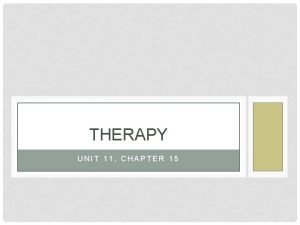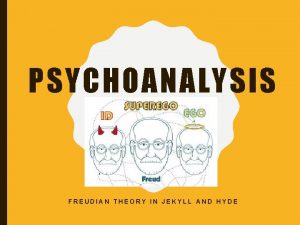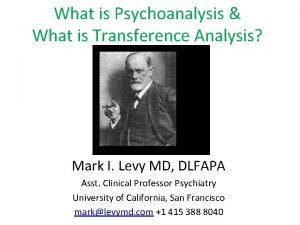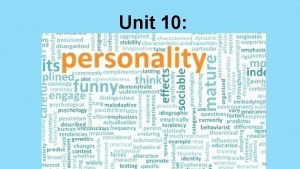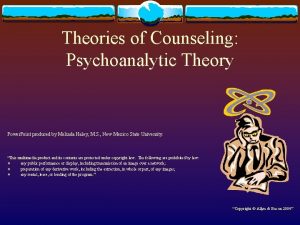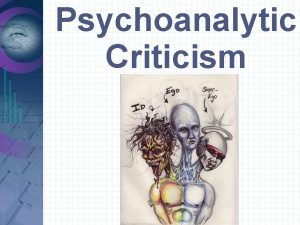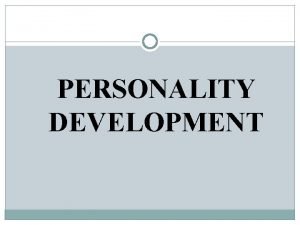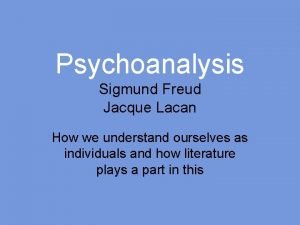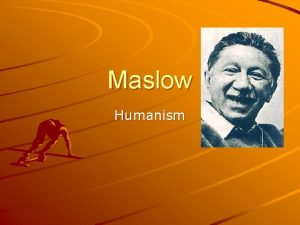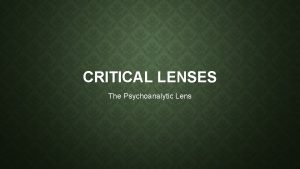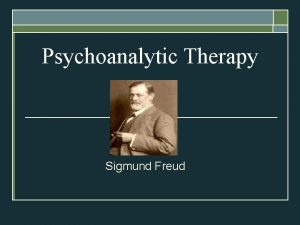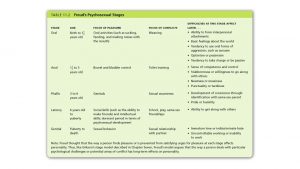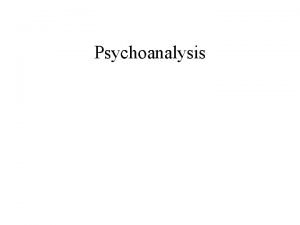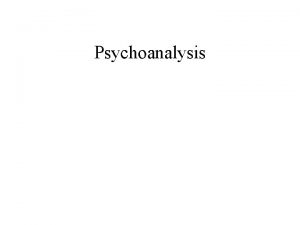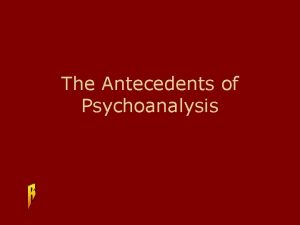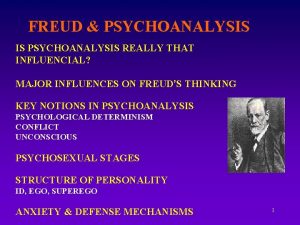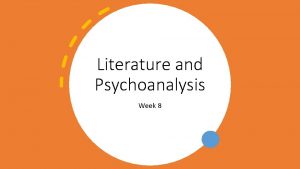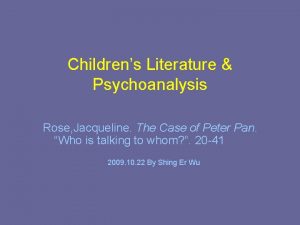Introduction to The Child in Literature and Psychoanalysis














- Slides: 14

Introduction to The Child in Literature and Psychoanalysis DOMINIC DEAN, 2019

Why use literature to study the child? • The meanings of ‘child’, ‘children’ and ‘childhood’ are contested, not stable; • Despite this, all these categories have strong legal, political and cultural protection; • Literature allows these categories to be negotiated and questioned (and the novel has long been concerned with early development). • As fiction, literature can explore issues that are otherwise difficult or taboo. • …And there are few things more contested than children!

Defining the child From a 1955 novel: Let me remind my reader that in England, with the passage of the Children and Young Person Act in 1933, the term "girl-child” is defined as "a girl who is over eight but under fourteen years” (after that, from fourteen to seventeen, the statutory definition is "young person”). In Massachusetts, U. S. , on the other hand, a "wayward child” is, technically, one “between seven and seventeen years of age” (who, moreover, habitually associates with vicious or immoral persons). Hugh Broughton, a writer of controversy in the reign of James the First, has proved that Rahab was a harlot at ten years of age. […] Marriage and cohabitation before the age of puberty are still not uncommon in certain East Indian provinces. […]

But let us he prim and civilized. Humbert tried hard to be good. Really and truly, he did. He had the utmost respect for ordinary children, with their purity and vulnerability, and under no circumstances would he have interfered with the innocence of a child, if there was the least risk of a row. But how his heart beat when, among the innocent throng, he espied a demon child, “enfant charmanfe et fourbe, " dim eyes, bright lips, ten years in jail if you only show her you are looking at her. Nabokov, Lolita (1955)

Why use psychoanalysis to study the child?

First, what is psychoanalysis? • A series of connected (but disparate) theories and clinical practices that all originate with the work of Sigmund Freud; • Begins (and remains) in clinical work but also generates influential theory within the Humanities; • Internally and externally contested, and often controversial.

Some notable figures in psychoanalysis Jean Laplanche 1924 -2012 Darian Leader 1965 - Ernest Jones 1879 -1958 Jacques Lacan 1901 -1981 Slavoj Žižek 1949 - Sigmund Freud 1856 -1939 Carl Jung 1875 -1961 Freud and his circle. Analysts and theorists inspired by Freud. Anna Freud 1895 -1982 Adam Phillips 1954 - Melanie Klein 1882 -1960 Jacqueline Rose 1949 - Contemporary psychoanalytic theorists and practitioners

So why use psychoanalysis to study the child? • Psychoanalysis has been concerned with children and childhood from its beginnings; • Its central (and controversial) innovation is to diagnose adults’ psychological conditions by understanding their early childhood experiences; • It remains a significant influence on understandings of childhood in popular culture; • It is concerned with the boundaries between childhood *as experienced by children* and *as recalled by adults*; • The latter boundary is key to legal/political/cultural disputes over the status of children and their protection. It’s also a major theme in literary works on childhood.

How psychoanalysis functions as ‘reading’ • Psychoanalysis is concerned with words (language) and narrative (literature), and has innovative ideas about both; • It treats narrative as capable of interpretation (in analysis) but as often opaque and ambiguous – especially to the narrator!

Is psychoanalysis strange? …Psychoanalysts would say it is strange because people are strange…they’re even strangers to themselves!

Psychoanalysis and innocence • In psychoanalysis, children can appear strange rather than innocent. • Freud considered that excessive belief in childhood innocence; (particularly regarding sexuality) could harm both children and adults; • Freud’s focus on child sexuality was widely considered to undermine notions of childhood innocence; • However, he also challenged ‘innocence’ as a moral category.

The history of the innocent child • It’s contested! • Linked to Romanticism (18 th- early 19 th century literary and artistic movement); • Changed in the 19 th century due to developments in work, leisure, education; • (But does also reflect older ideas, including major themes in Christianity); • Contests over the nature of childhood innocence have intensified in the late 20 th and early 21 st centuries with major scandals over child abuse and political battles over what gender and sexuality mean for children.

Looking at the ‘innocent’ child today From Kathryn Bond Stockton, ‘The Queer Child, or Growing Sideways in the Twentieth Century’, 2009.

Questions to take away and apply to the texts • What definitions/expectations of the child might the author/film-maker have been working within at the time of writing? • Are they working with or against those definitions and expectations – or is it more complicated than that? • Are they influenced by psychoanalytic ideas about children and childhood? • Are we influenced by psychoanalytic ideas in how we respond to the text? • What else is influencing us today in how we respond to children and childhood in the text? Are these influences stable, or contested?
 Therapies defined as “talk therapies” include
Therapies defined as “talk therapies” include Freud and jekyll and hyde
Freud and jekyll and hyde Psychodynamic personality theory
Psychodynamic personality theory Both psychoanalysis and humanistic therapy stress
Both psychoanalysis and humanistic therapy stress What is transference
What is transference Psychoanalytic theory
Psychoanalytic theory Sigmund freud psychodynamic theory
Sigmund freud psychodynamic theory Psychoanalysis focuses on
Psychoanalysis focuses on Eros freud
Eros freud Sigmund freud psychodynamic theory
Sigmund freud psychodynamic theory The psychoanalytic perspective
The psychoanalytic perspective Teoría de lacan
Teoría de lacan Maslow and humanism
Maslow and humanism Psychoanalysis lens
Psychoanalysis lens Techniques of psychoanalysis
Techniques of psychoanalysis
